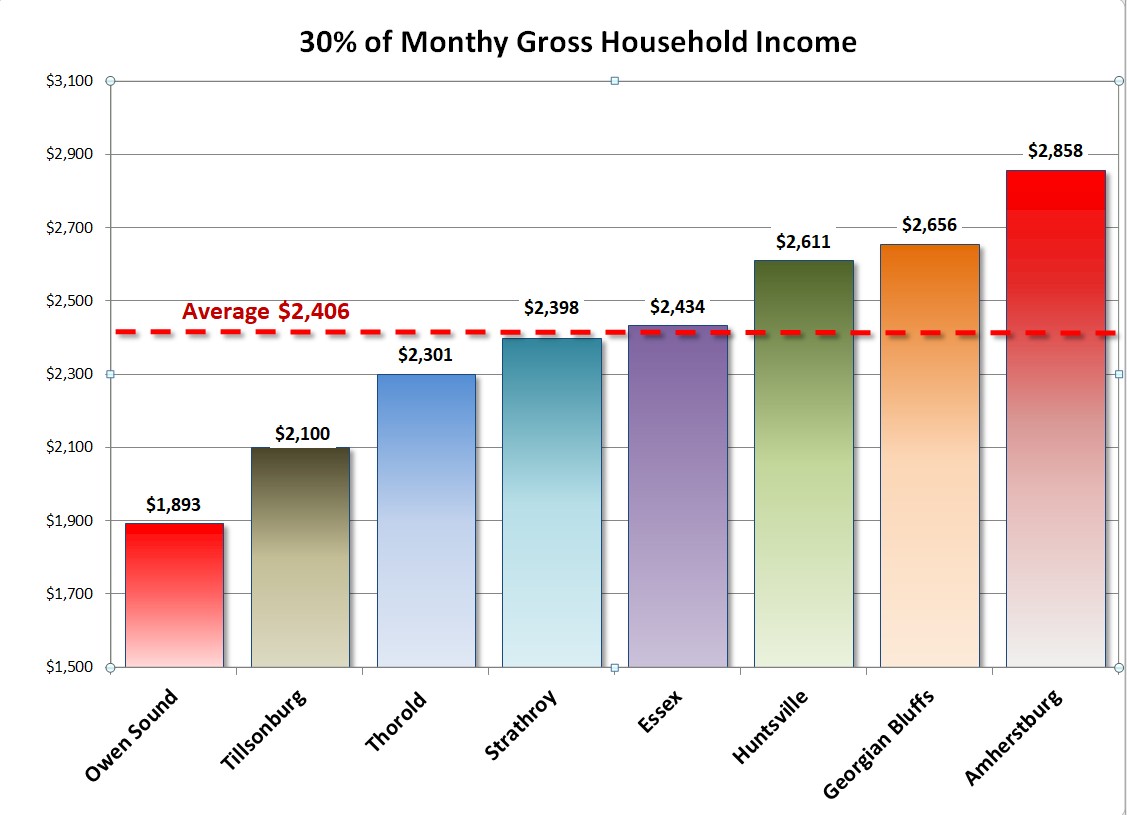
Owen Sound’s Housing Problem – Part I
property taxes make a bad situation worse
The Problem
There is no question we are facing a crisis in housing and
homelessness throughout Ontario. Housing affordability is a reality
facing many families. Some are forced to rent inadequate
accommodations that just don’t meet their family needs while those
dreaming of home ownership are just priced out of the market.
Canadian Urban Institute’s report released in 2019 cited the housing
supply as the main cause of the housing crisis. This was echoed by
Ontario’s Affordability Task Force Report in 2022. However, in many
areas, Owen Sound for example, housing supply is not the only
driving force.
|
The housing and homelessness crisis in Ontario continues to be a serious and widespread issue. Finding a place to live in Ontario is a struggle for many due to low vacancy rates, limited supply, and an insufficient mix of housing options. The costs of ownership and rental rates are rising much faster than incomes, and people experiencing homelessness are in desperate need of a roof over their heads. Association of Municipalities Ontario |
Wages in general are just not keeping up with the cost of housing in most communities. However, in communities like Owen Sound low household incomes coupled with rising costs make it particularly difficult for families. Owen Sound has one of the lowest average household incomes in the province at $75,861, which makes even small cost increases nearly unbearable for many families.
 |
| Figure 1; Average Household Income source: BMA Municipal Studies |
It’s important to realize the significance of Owen Sound’s low
household incomes. Most households have at least two wage earners
which means that the average wage earner is taking home a gross
income of about $38,000 which works out to be about $19 per hour.
This is the average; which means that there are many families with
household incomes of less than $75,861.
Affordable Housing
 |
| Figure 2; 30% of Gross Monthly Household Income source 2022 BMA Report |
This informs us that in Owen Sound the average family can afford to spend $1,892 per month on rent or on combined mortgage and property tax. The problem for renters is that the average two-bedroom apartment in Owen Sound costs $1,990. source: All Classifieds This means that Owen Sound families with the average household income or below, are not living in affordable housing.
For families in this situation even small increases in the cost of essentials such as food or rent become very significant. Landlords routinely pass on increases in property taxes to tenants in the form of rent increases, such as those that have been imposed annually over the last 30 years. Therefore an increase in property taxes can result in families, both homeowners and renters, paying more than 30% of their gross household incomes on housing.
Impact of Property Taxes
 |
| Figure 3; Property Taxes as a Percentage of After Tax Household Income source: 2022 BMA Report |
The result is very enlightening. A family living in Owen Sound has
to use 7.22% of their after tax income for housing costs while a
family living just down the street in Georgian Bluff only needs to
spend 2.21% of their after tax income on housing. There is another
way of looking at this, Click here to see a comparison of: What’s
Left After Paying Property Taxes
This disparity did not come about recently. It developed over the
past 30 years so as a result of two alarming trends;
1) the loss of high paying jobs, and
2) unnecessary expense increases at city hall.
Those of us who were around in the 60s and 70s remember that Owen Sound once had a thriving industrial base. We can see some of the remnants of these industries today in the abandoned properties, like the empty lots where the Black Clawson Kennedy foundry once stood on the west and Russel-Hipwell’s on the east side. There was also the Keenan’s Toothpick factory, RCA, Goodyear and Pittsburg glass to name just a few.
During the time when these jobs were disappearing Owen Sound’s population was at times stagnant and often shrinking. One would think that a shrinking population would result in city expenses at least remaining the same. Yet when we examine city expenses during this period and beyond we see that expenses were growing at times at twice the rate of inflation. This link shows expense growth during a ten year period. Expense Growth. Much of this expense growth was caused by the city’s propensity to hire more staff in spite of a stagnate population.
In Part II we will examine a very realizable solution to address this problem